AERD Medication Safety Checker
Check Your Medication Safety
This tool helps you determine if a medication or substance is safe for people with Aspirin-Exacerbated Respiratory Disease (AERD). The condition affects about 1 in 10 adults with asthma.
Note: This is not medical advice. Always consult your healthcare provider before making changes to your medication.
Most people think of aspirin and ibuprofen as harmless pain relievers. But for about 1 in 10 adults with asthma, taking these common drugs can trigger a life-threatening reaction-wheezing, chest tightness, and sudden nasal swelling. This isn’t an allergy. It’s aspirin-exacerbated respiratory disease (AERD), a hidden condition that flies under the radar in clinics across the U.S. and U.K.
What Exactly Is Aspirin-Exacerbated Respiratory Disease?
AERD, once called Samter’s Triad, isn’t just asthma with a drug sensitivity. It’s a full-body inflammatory disorder with three clear signs: asthma, chronic nasal polyps, and severe reactions to aspirin or other NSAIDs like ibuprofen and naproxen. These aren’t random symptoms-they’re linked by a broken chemical pathway in the body.
When someone with AERD takes aspirin or an NSAID, their body stops making protective prostaglandins and starts overproducing leukotrienes. These molecules flood the airways with inflammation. The result? Swollen sinuses, blocked nasal passages, tightening lungs, and sometimes full-blown asthma attacks within minutes.
Unlike typical allergies, there’s no IgE antibody involved. That’s why skin tests and standard allergy panels miss it. Diagnosis comes from recognizing the pattern: adult-onset asthma, recurring nasal polyps, and reactions to common painkillers.
Who Gets AERD-and Why Is It So Often Missed?
AERD usually shows up between ages 20 and 50. It doesn’t run in families. It doesn’t start in childhood. It hits suddenly, often after a person has been taking ibuprofen for headaches or back pain for years without issue. Then one day, after taking Advil, they can’t breathe.
Here’s the scary part: most patients wait 7 to 10 years before getting the right diagnosis. Primary care doctors see the asthma and treat it with inhalers. ENTs remove the polyps, only for them to grow back in 6 months. No one connects the dots until someone mentions the aspirin reaction.
And even then, many clinicians don’t know about the alcohol link. Three out of four AERD patients react to alcohol-even a single glass of wine or beer. Flushing, nasal congestion, and wheezing can follow. But doctors rarely ask about drinking habits when evaluating asthma.
What Happens When You Take NSAIDs With AERD?
Reactions aren’t mild. They’re intense and fast. Within 30 to 120 minutes of taking aspirin or ibuprofen, patients typically experience:
- Severe nasal congestion (95%)
- Frontal headache or sinus pressure (88%)
- Red, watery eyes (76%)
- Wheezing, coughing, chest tightness (92%)
- Flushing or rash (29% and 22%)
- Nausea or vomiting (up to 45%)
These reactions aren’t random. They’re predictable. That’s why some patients keep a log: “No ibuprofen. No naproxen. No aspirin. No red wine.” But even with strict avoidance, the disease keeps progressing. Nasal polyps grow back faster. Asthma gets harder to control. Emergency room visits climb.
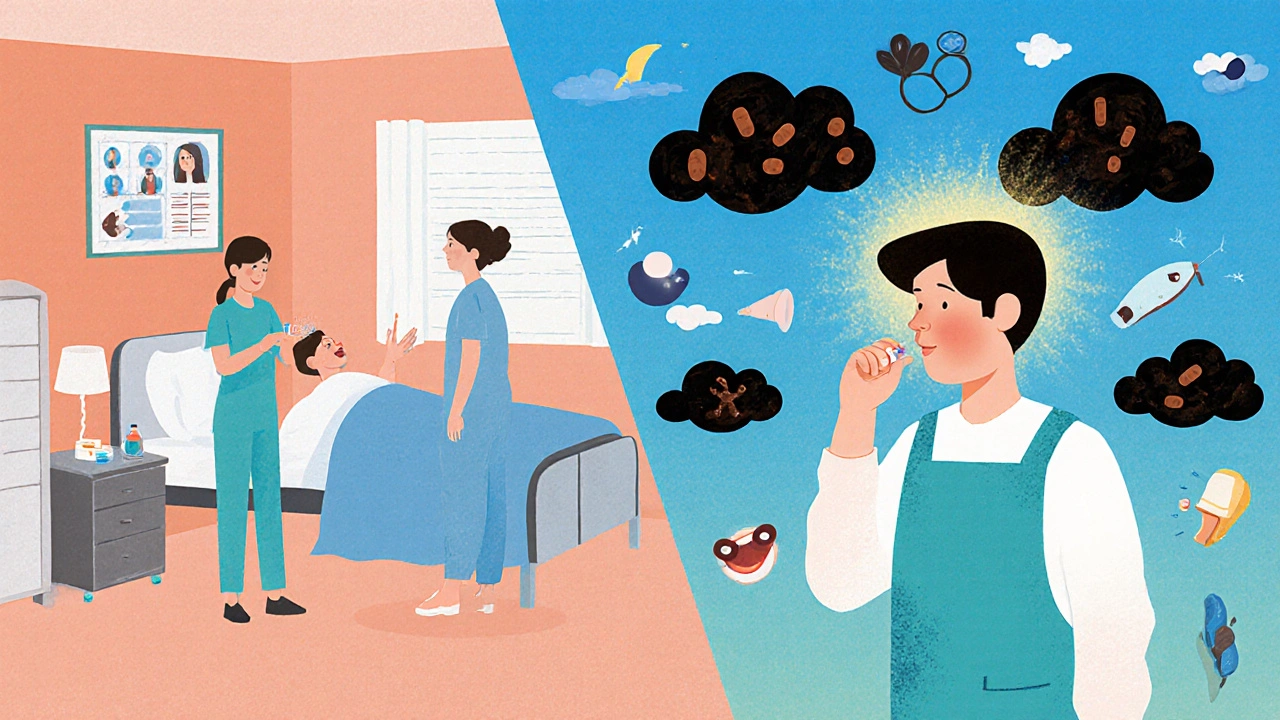
Why Standard Asthma Treatments Often Fail
Most asthma patients respond well to inhaled corticosteroids and bronchodilators. But for AERD, that’s only half the battle. Only 35% of patients achieve good control with standard inhalers alone.
Why? Because AERD isn’t just about bronchial tubes. It’s about chronic inflammation in the sinuses, nose, and lungs. The same immune cells that swell the nasal polyps also attack the airways. Treating just the lungs ignores the root cause.
That’s why many AERD patients end up in surgery-again and again. Polyp recurrence rates hit 70-100% within 18 months after removal. Compare that to 30-40% in non-AERD patients. Each surgery costs around $15,000. And it doesn’t stop the cycle.
The Game-Changer: Aspirin Desensitization
There’s one treatment that actually changes the course of AERD: aspirin desensitization. It sounds risky-giving someone a drug that triggers attacks. But under medical supervision, it’s safe and life-changing.
The process takes 2-3 days in a hospital. Patients start with tiny doses of aspirin, slowly increased until they can tolerate 650 mg twice daily. Once desensitized, the body stops reacting. And the benefits last.
Studies show:
- 85% of patients see improved asthma control
- Sinus surgeries drop by 60%
- Nasal polyp regrowth slows from every 6 months to every 3 years
- Quality of life improves for 68% of patients
But here’s the catch: only 12% of allergy clinics in the U.S. offer this treatment. Most patients never hear about it. And even if they do, finding a center that does it is hard. There are only about 35 specialized AERD centers nationwide.
What About Biologics Like Dupixent?
For patients who can’t do desensitization-or whose symptoms persist-biologics like dupilumab (Dupixent) are a newer option. Approved for nasal polyps in 2019, it blocks key inflammatory signals (IL-4 and IL-13) that drive AERD.
It works: 50-60% of patients see significant reduction in polyp size. But it’s expensive-$38,500 a year. Insurance coverage is spotty. Only 38% of AERD patients have it covered. And it doesn’t fix the NSAID sensitivity. You still can’t take ibuprofen.
Biologics are a bridge-not a cure. Desensitization remains the only treatment that targets the core mechanism of the disease.
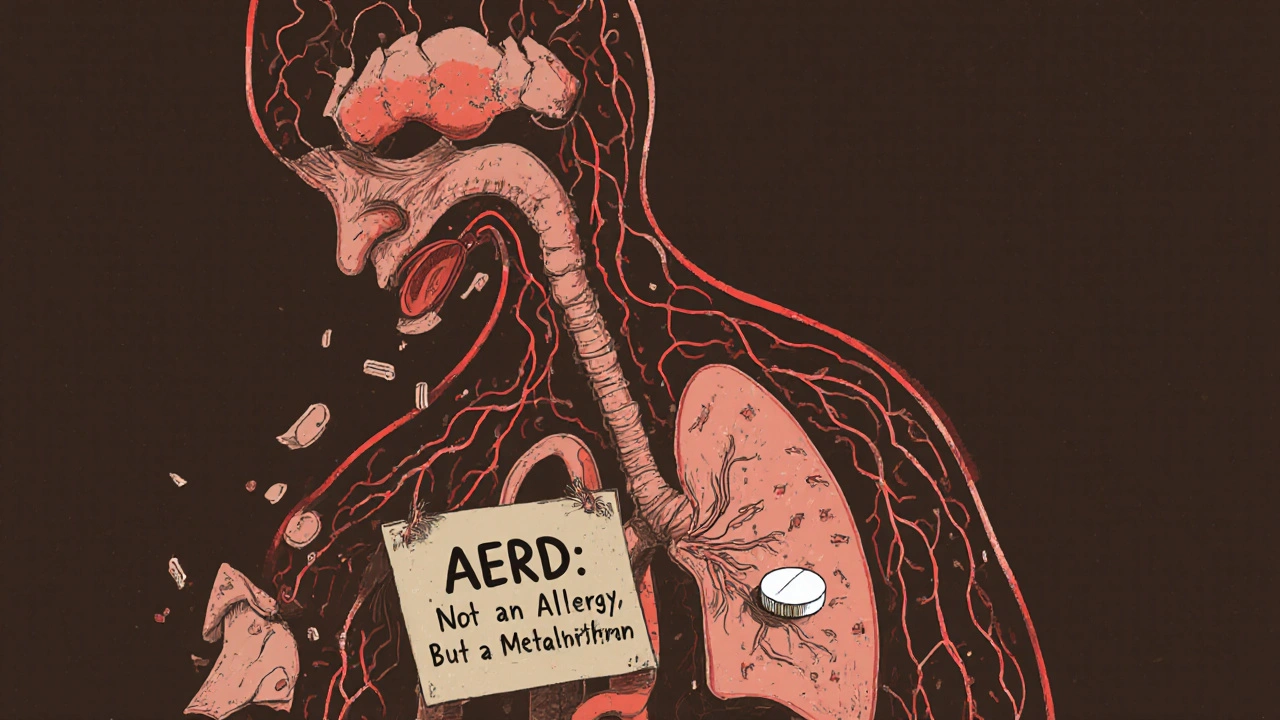
Real Stories, Real Struggles
On Reddit, a user named PolypWarrior87 wrote: “It took me 11 years and four ENT specialists before someone finally connected my asthma attacks after taking Advil to my nasal polyps.” That’s not rare. It’s the norm.
Another patient, NoseFree99, said: “After desensitization, my polyp regrowth slowed from every 6 months to every 3 years.” That’s the kind of change that lets people sleep, breathe, and live normally again.
But fear holds people back. One in three undiagnosed patients avoid testing because they’re scared of the reaction. They end up with unnecessary surgeries, worsening asthma, and no real answers.
What Should You Do If You Suspect AERD?
If you have asthma, recurring nasal polyps, and reactions to aspirin, ibuprofen, or alcohol, you need to get evaluated by an AERD specialist. Don’t wait. Don’t assume your doctor knows about it.
Start by asking:
- “Could my asthma and polyps be linked to NSAID sensitivity?”
- “Have I ever had a reaction to alcohol after taking painkillers?”
- “Can you refer me to a center that does aspirin desensitization?”
Bring a symptom log. Note when reactions happen. List every NSAID you’ve taken-even over-the-counter ones. Mention alcohol. These details matter.
If your current doctor doesn’t know what you’re talking about, find someone who does. The Samter’s Society and the American College of Allergy, Asthma, and Immunology have directories of specialists.
The Bigger Picture: Why This Matters
AERD affects 1.2 million Americans. It costs $1.8 billion a year in surgeries, ER visits, and missed work. It’s not rare. It’s just invisible.
And there’s a deep inequity. Black and Hispanic patients wait 3.2 years longer for diagnosis than white patients. That delay means more surgeries, worse lung function, and higher costs.
The science is advancing. New drugs like MN-001 are in trials. A national patient registry is launching. But progress won’t help if people don’t know they have it.
Aspirin-exacerbated respiratory disease isn’t a myth. It’s a real, treatable condition hiding in plain sight. If you’ve struggled with asthma that won’t improve, polyps that keep coming back, or reactions to common painkillers-you’re not alone. And you don’t have to live like this anymore.
Is AERD the same as a drug allergy?
No. AERD is not an IgE-mediated allergy. It’s a metabolic disorder triggered by the inhibition of the COX-1 enzyme. Standard allergy tests like skin pricks or blood IgE tests won’t detect it. Diagnosis relies on clinical history and, sometimes, a supervised aspirin challenge.
Can I take Tylenol if I have AERD?
Yes. Acetaminophen (Tylenol) does not inhibit COX-1 the same way aspirin or ibuprofen do, so it’s generally safe for AERD patients. However, some individuals may still react to high doses. Always start with a low dose under medical supervision if you’re unsure.
Do I have to take aspirin forever after desensitization?
Yes. The benefits of aspirin desensitization only last as long as you keep taking a daily dose-usually 650 mg twice a day. Stopping even for a few days can cause you to lose tolerance, and restarting can trigger a reaction. It’s a lifelong commitment, but for most, the trade-off is worth it.
Why does alcohol trigger AERD symptoms?
Alcohol increases the production of leukotrienes and may enhance the effects of other inflammatory triggers in AERD. It’s not the alcohol itself-it’s how it interacts with the already dysregulated immune system. About 75% of AERD patients react to alcohol, even in small amounts.
Are there any new treatments on the horizon?
Yes. A new drug called MN-001 (lodadustat), a targeted leukotriene inhibitor, showed a 70% reduction in polyp recurrence in early trials. FDA breakthrough designation was granted in June 2023. Other biologics targeting IL-5 and IL-33 are also in development. These could offer alternatives for those who can’t tolerate daily aspirin.



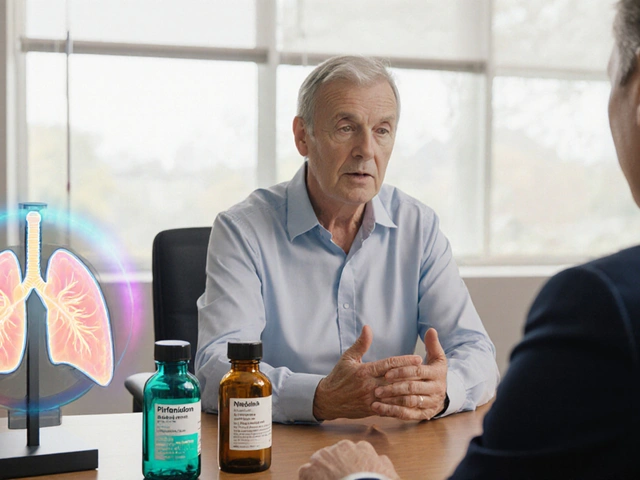
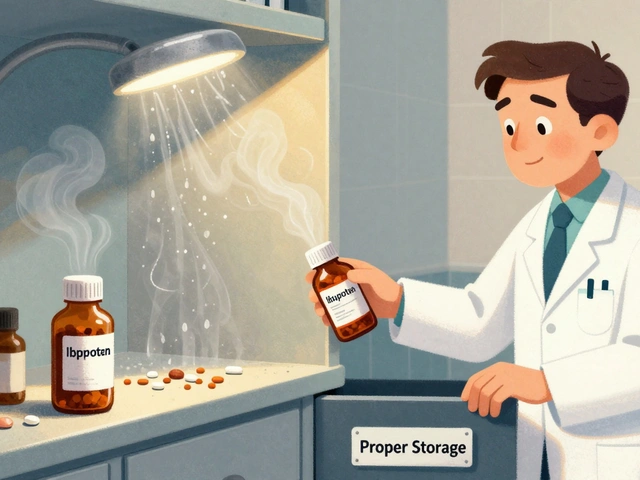

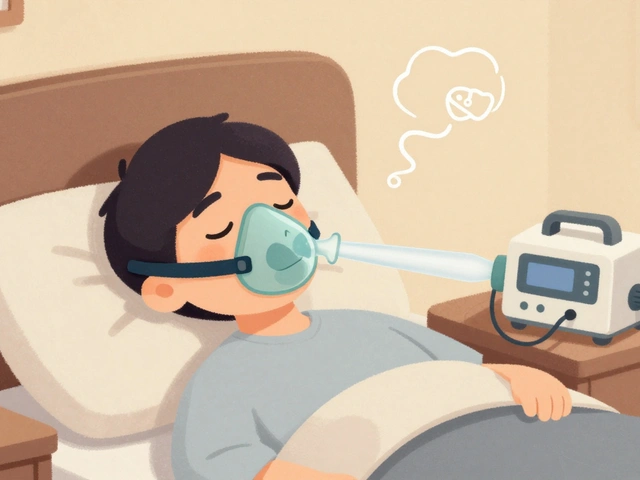

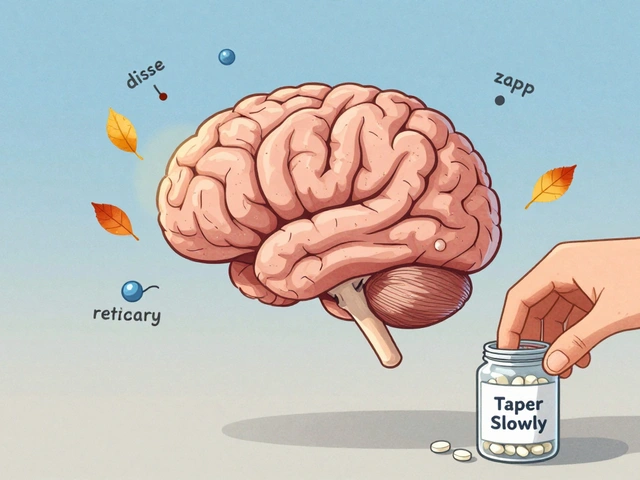
Angela Gutschwager
20 Nov 2025 at 17:00So I just took ibuprofen for my headache and now I’m wheezing? 🤦♀️ Guess I’m one of those 1 in 10. Thanks for the heads-up, I guess. I’ll stick to Tylenol now… and avoid wine forever. 😔